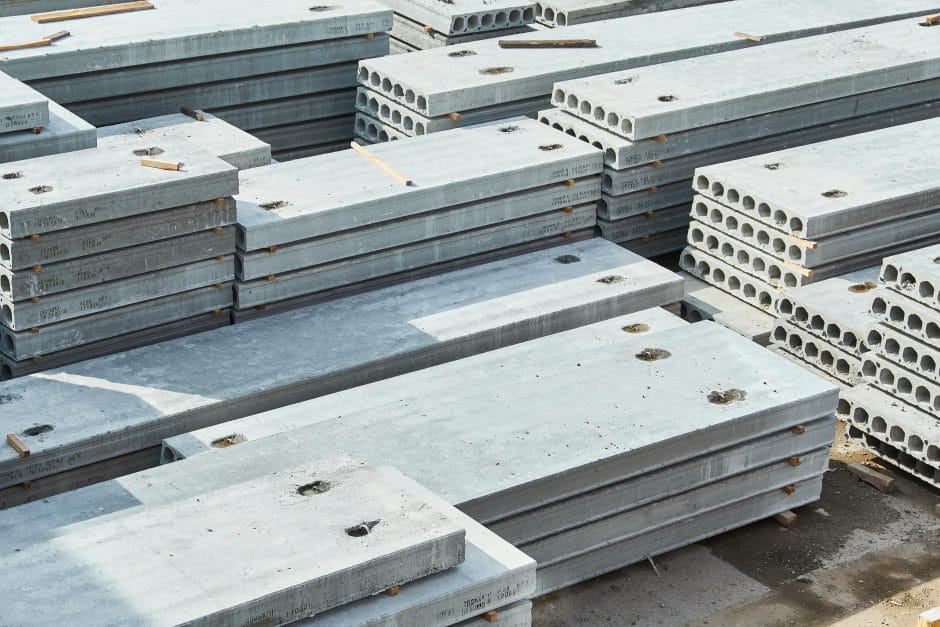
What You Need to Know About Precast Concrete
It is not surprising to know the significant number of architectural advancements that have taken place in recent years. One of the said advances is in the application of precast concrete. Precast concrete has replaced traditional cast-in-place concrete.
Together with other precast goods, they are used by builders in many projects since precast concrete is more convenient than traditional ones. They speed up construction and produce stronger structures. Aside from that, precast concrete has many advantages, types, and uses, which will be covered in this article.
What is Precast Concrete?
Precast concrete parts are manufactured externally using formwork. This is the major difference between precast concrete and cast-in-place concrete. Here’s a clear overview of the precast concrete process:
- Precast concrete is compressed into wooden or steel molds lined with cable mesh and reinforcing bars. This form can also include a prestressed cable if desired.
- Curing takes place in a controlled setting, usually in a factory.
- After completion, the precast concrete part is transported to the construction site and installed.
Types of Projects in Precast Concrete
1. Precast Concrete Structures
Precast concrete structures last long and are durable. It is often used to build things that withstand prolonged use or bad weather. This is why precast concrete structures are commonly used in places like roads or buildings susceptible to wear and tear.
Precast concrete structures are also popular in the following applications:
- Parking structures
- Foundations
- Bridges
- Culverts
- Sound walls
- Retaining walls
- Curb inlets
2. Precast Concrete Buildings
Precast concrete materials are perfect for many kinds of building projects since they are fire-resistant. Aside from that, precast concrete buildings lower moisture levels and produce an environment that is energy efficient.
The following building projects demonstrate precast concrete’s adaptability:
- Office building
- Multi-Unit housing
- Schools
- Hospitals and Medical centers
- Shopping malls
Benefits of Using Precast Concrete
Using precast concrete materials gives engineers more flexibility when designing and planning homes or buildings. Since concrete products are ready-made, they can be brought to the site and installed quickly. If you use precast concrete products, your project will go faster and cost less.
Precast concrete also offers many advantages, such as flexibility, managing, effectiveness, and being environmentally friendly. In addition, here’s more information on how precast concrete can benefit you.
1. Efficiency
The controlled industrial environment leads to efficiency. The entire construction process is sped up when precast concrete can be produced year-round in a plant environment.
You don’t have to plan concrete pouring for a short time on-site. Instead, you could order the precast materials beforehand and keep them until you install them on-site. This saves you both money and time on assembling line procedures, which demand less labor and alleviate the burden of coordinating on-site specialized labor and logistics.
2. Controlled Environment
Precast concrete is made in a strictly regulated setting. Therefore, external factors like the weather will not affect the output quality or timetable. You have full control over the climate to guarantee that each precast concrete item has hardened uniformly in perfect conditions.
Aside from that, you can ensure the manufacturing of precast concrete components will be completed on time, eliminating weather delays for on-site pouring.
3. Versatility
Contrary to popular belief, precast concrete is more versatile than other types of construction. Its ability to be shaped to include the colors, textures, and sizes you desire explains why precast concrete is widely used for different applications.
4. Sustainability
Manufacturing precast concrete is a sustainable practice. This is why:
- Gravel, sand, rock, and water are the natural aggregates that make up concrete.
- Recycled water is used in the production of concrete.
- The thermal mass of precast concrete slowly absorbs and releases heat, resulting in long-term energy savings.
- Precast constructions utilize less material than items cast on-site. Less environmental resources are extracted as raw materials, and less waste must be discarded after a project.
Use Precast Concrete!
You must employ a precast concrete manufacturer, whether working on a project with precast concrete buildings or structures mentioned above. If you want to use precast concrete’s advantages fully, you’ll need a capable manufacturer to generate the materials necessary to complete the project and satisfy your specifications.
References:
https://premierprecast.com/precast-concrete/
https://www.permacastwalls.com/complete-guide-precast-concrete-need-know







